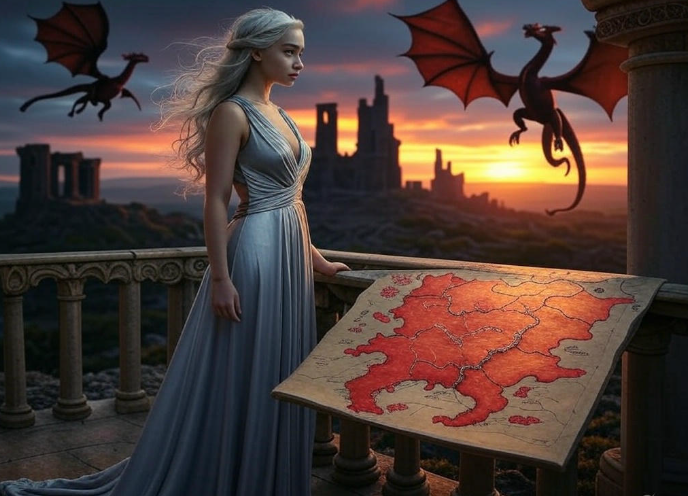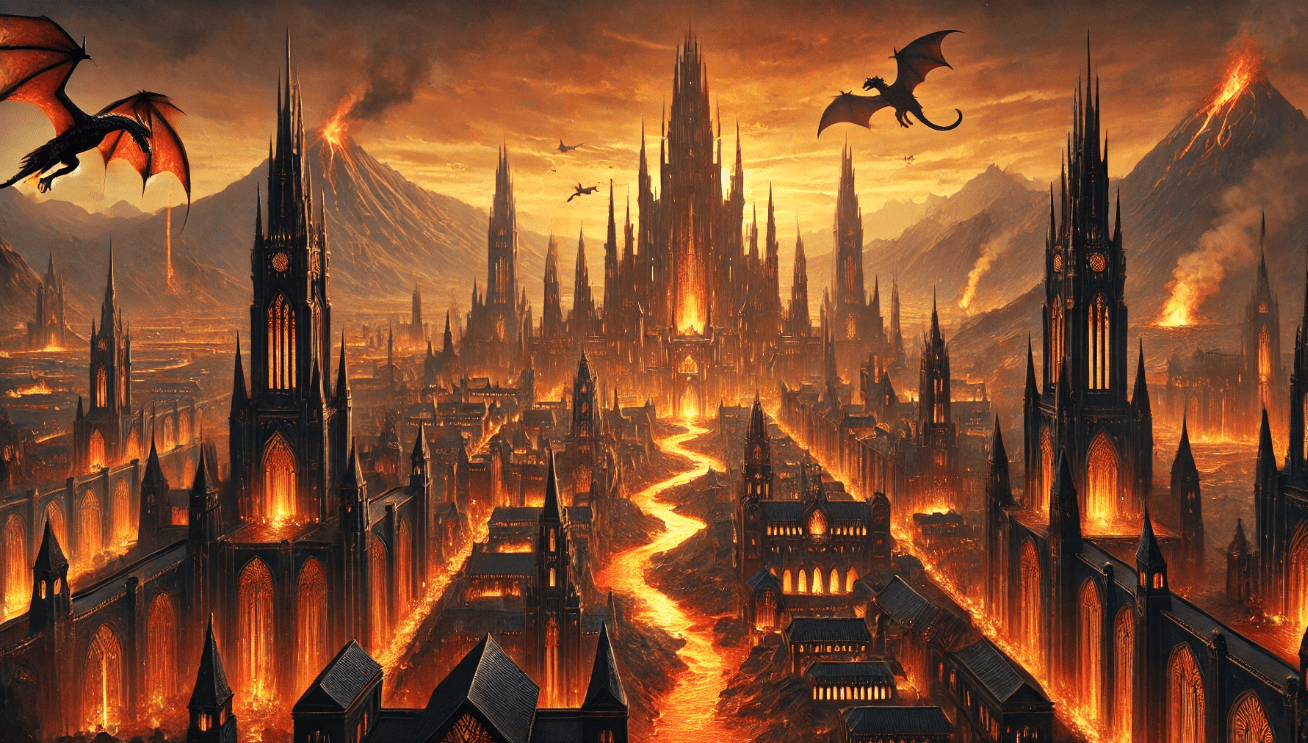What Was Valyria?
Valyria was a powerful ancient civilization located in Essos, east of Westeros. Known as the Valyrian Freehold, it wasn’t ruled by kings but by noble families who shared power. At its peak, Valyria was the most advanced empire in the known world.
What made Valyria so special? Dragons. The Valyrians were the first to tame and ride dragons, using them to conquer vast lands. They also mastered magic and built cities with towering spires and fire-lit roads.
Valyrian steel—strong, light, and deadly—was another of their unmatched creations. Only a few weapons forged in Valyria still exist today.
Most importantly for Game of Thrones fans, House Targaryen was one of the few Valyrian families that survived the empire’s fall. Their survival kept the legacy of Valyria alive in Westeros.

The Rise of Valyria
Valyria began as a small city of shepherds on a peninsula in Essos. Everything changed when they discovered dragons living in the volcanic mountains known as the Fourteen Flames.
By mastering dragons and blood magic, the Valyrians became unstoppable. They used their dragons not just as weapons, but as tools of conquest. With fire and flight, they expanded their territory and formed the Valyrian Freehold—an empire ruled by noble families rather than a single king.
Valyria quickly became the center of power in the world. Its people built great cities, forged magical weapons like Valyrian steel, and developed a strong trade network. They even created roads that glowed with fire to light the way.
Through their knowledge of magic and mastery over dragons, the rise of Valyria became one of the most powerful and feared stories in Game of Thrones history.
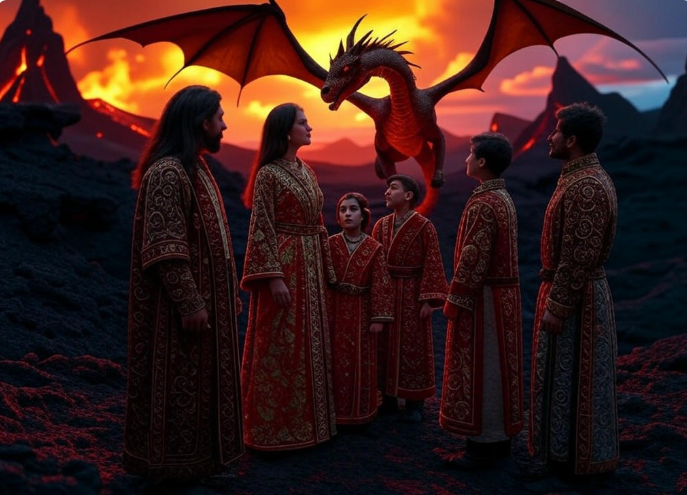
The Doom of Valyria
The Doom of Valyria was a sudden and catastrophic event that destroyed the entire empire in a single day. Massive volcanic eruptions, earthquakes, and firestorms shattered the Valyrian Peninsula, turning it into a smoking ruin.
No one knows exactly what caused the Doom. Some say it was a natural disaster from the unstable volcanoes. Others believe it was a magical experiment gone wrong or the gods punishing the Valyrians for their pride.
Whatever the cause, the result was clear: the fall of Valyria was total. Its cities, knowledge, dragons, and people—all wiped out.
Only one noble family survived: House Targaryen. They had moved to Dragonstone years before the disaster, guided by a prophetic dream. Their survival would later change the fate of Westeros.
The Doom didn’t just end a civilization. It erased a legacy of magic and power that the world has never fully recovered from.

The Legacy of Valyria
Though Valyria was destroyed, its legacy still shapes the world of Game of Thrones.
House Targaryen is the most direct link to Valyria. As the last known dragonlords, they brought Valyrian fire to Westeros and used it to conquer and rule. Their dragons and bloodline kept Valyrian power alive for generations.
Valyrian steel is another major legacy. These rare swords are prized for their strength, sharpness, and ability to kill White Walkers. Weapons like Longclaw, Oathkeeper, and Heartsbane are all Valyrian steel.
The Valyrian language is still spoken by Daenerys and others. It’s a reminder of the lost culture and its deep magical roots.
Even the ruins of Old Valyria hold power and danger. When Tyrion and Jorah sail past, we see the haunting beauty and curse left behind.
Valyria may be gone, but its fire still burns in the blood, steel, and stories of Westeros.
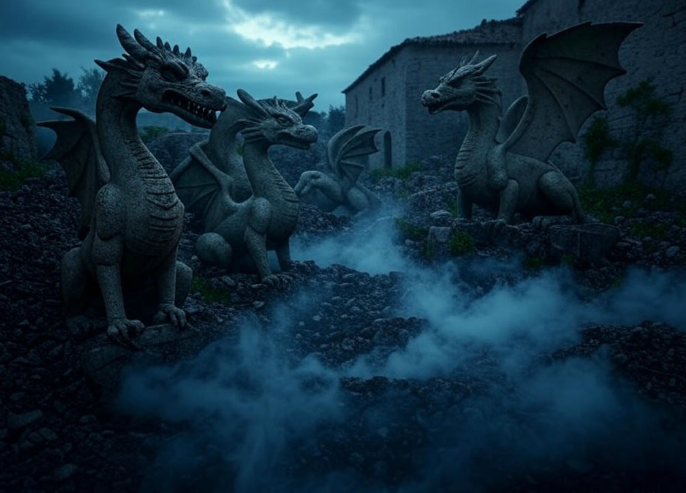
What the Fall of Valyria Symbolizes
The fall of Valyria is more than just a historical event—it’s a powerful symbol in the world of Game of Thrones.The Danger of Power Without Limits
Valyria had unmatched power—dragons, magic, weapons. But they pushed too far. Their fall shows what happens when ambition and pride go unchecked.
- The Fragility of Great Civilizations
No empire is too strong to fall. Like Atlantis or Rome in real-world history, Valyria shows that even the greatest can vanish overnight. - A Warning About Magic
Valyria’s magic was strong but dangerous. The Doom reminds us that power without control can destroy its own creators. - Legacy Over Longevity
Though Valyria fell, its influence lived on—through the Targaryens, Valyrian steel, and prophecy. What we leave behind can matter more than how long we last.
In the end, the rise and fall of Valyria is a story of glory, hubris, and warning—one that still shapes the fate of Westeros long after the empire itself turned to ash.
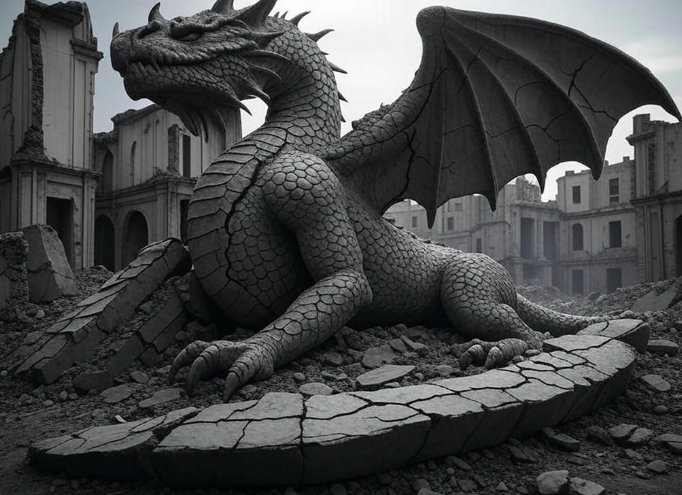
FAQs About Valyria
Q1: Is Valyria a real place?
No. Valyria is a fictional civilization in Game of Thrones and A Song of Ice and Fire, inspired by ancient empires like Rome and Atlantis.
Q2: What caused the Doom of Valyria?
The exact cause is unknown. It was a massive cataclysm—volcanoes, earthquakes, firestorms—that destroyed the empire in one day. Some say it was magical or a punishment from the gods.
Q3: Who survived the Doom?
Only a few families survived, most notably House Targaryen, who had already moved to Dragonstone before the disaster.
Q4: Why didn’t the Targaryens return to Valyria?
They believed Valyria was cursed and avoided the ruins. Later events—like the loss of explorers and rise of the Stone Men—confirmed those fears.
Q5: What is Valyrian steel?
It’s a rare, magical metal made in Valyria. Valyrian steel blades are light, sharp, and deadly—especially against White Walkers.
Q6: Is Valyria connected to dragons?
Yes. The Valyrians were the first to tame and ride dragons. Their power came from this bond, and it shaped their entire empire.
Q7: Are there still Valyrian ruins in the story?
Yes. Old Valyria still exists in ruins—dangerous and haunted. Tyrion and Jorah pass through it in the show.
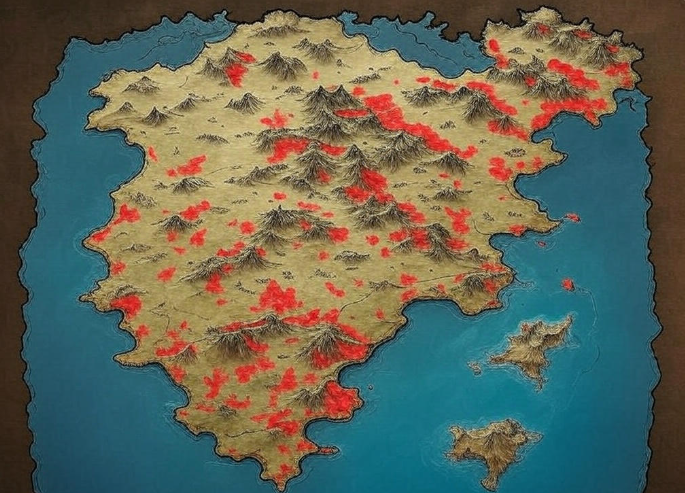
Conclusion
Valyria was more than an empire—it was a symbol of ultimate power, magic, and ambition. Its breathtaking rise and sudden fall remind us that even the greatest civilizations can be brought down by their own strengths.
Through the Targaryens, Valyrian steel, and ancient prophecies, the shadow of Valyria still looms over Westeros. From dragonfire to spoken Valyrian, its legacy lives on in every corner of Game of Thrones.
By understanding the rise and fall of Valyria, we gain a deeper connection to the world George R.R. Martin created—and to the timeless themes of pride, power, and the price of greatness.
